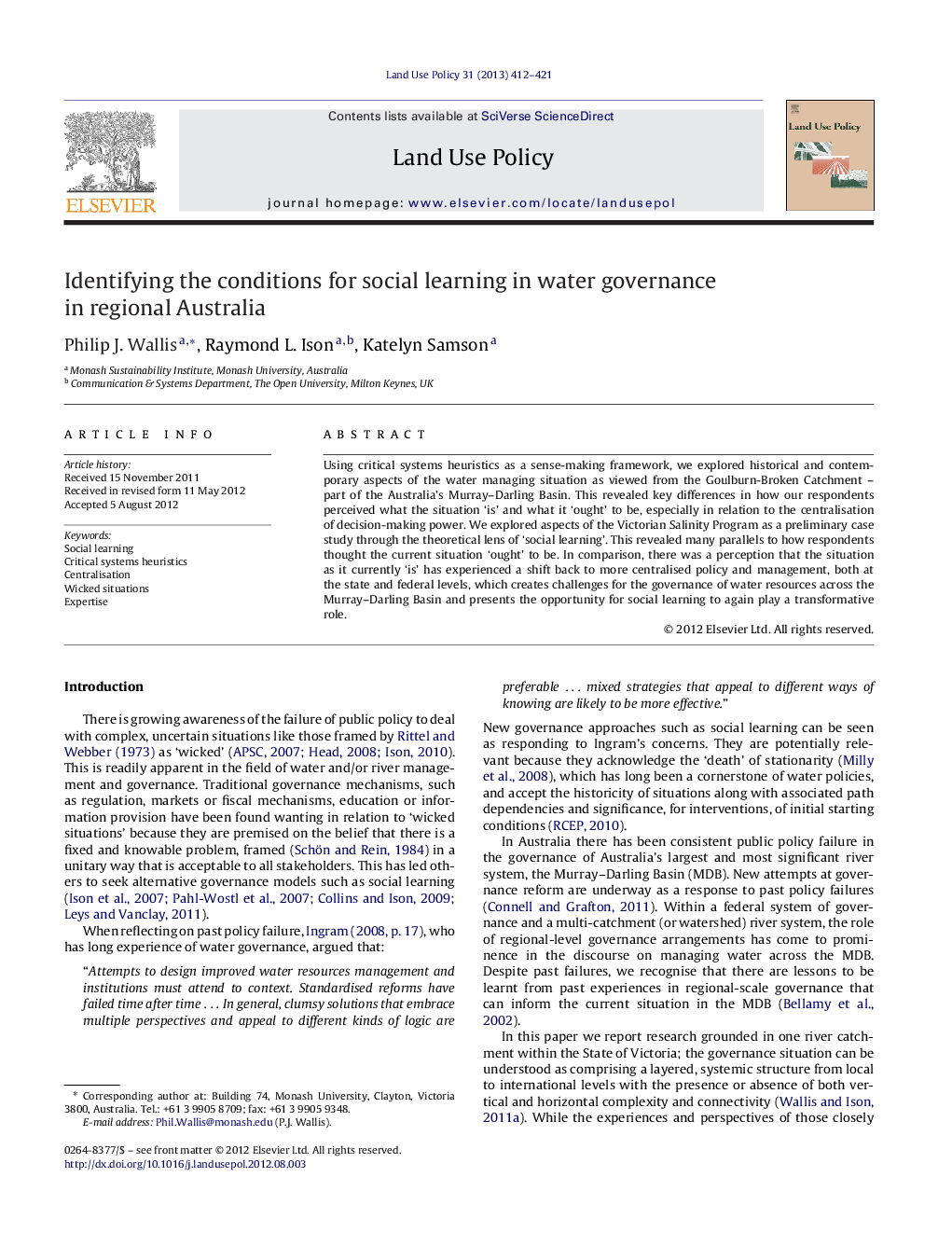| Article ID | Journal | Published Year | Pages | File Type |
|---|---|---|---|---|
| 93098 | Land Use Policy | 2013 | 10 Pages |
Using critical systems heuristics as a sense-making framework, we explored historical and contemporary aspects of the water managing situation as viewed from the Goulburn-Broken Catchment – part of the Australia's Murray–Darling Basin. This revealed key differences in how our respondents perceived what the situation ‘is’ and what it ‘ought’ to be, especially in relation to the centralisation of decision-making power. We explored aspects of the Victorian Salinity Program as a preliminary case study through the theoretical lens of ‘social learning’. This revealed many parallels to how respondents thought the current situation ‘ought’ to be. In comparison, there was a perception that the situation as it currently ‘is’ has experienced a shift back to more centralised policy and management, both at the state and federal levels, which creates challenges for the governance of water resources across the Murray–Darling Basin and presents the opportunity for social learning to again play a transformative role.
► The role of regional-level water governance arrangements was assessed. ► Critical systems heuristics were employed as a sense-making framework. ► Decision-making has become more centralised. ► We examined an exemplar of social learning from the Victorian Salinity Program. ► Lessons from past regional-scale governance can inform Murray–Darling Basin reform.
